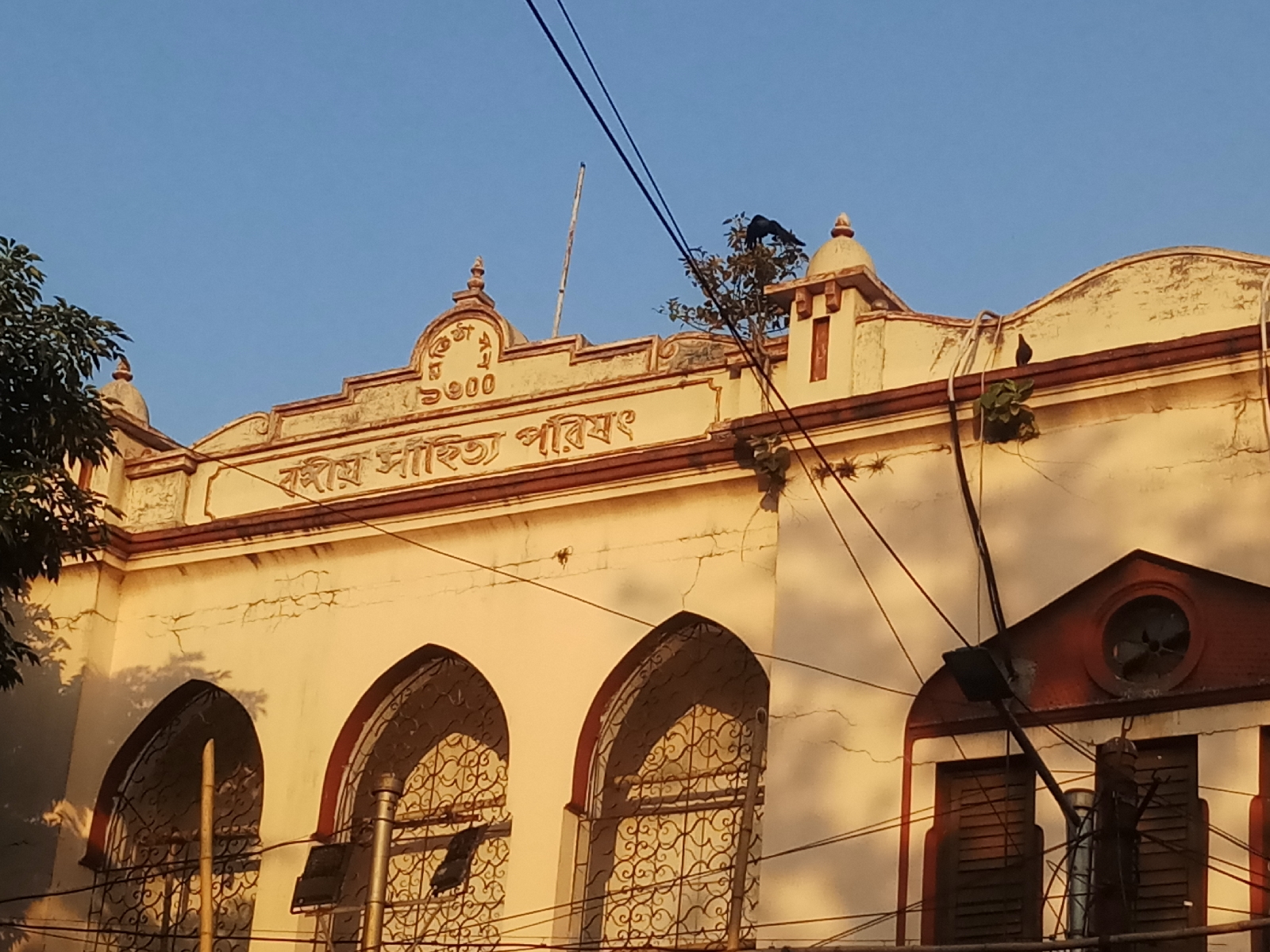Uttarpara Library and Raja Peary Mohan College
Uttarpara Jaykrishna Public Library is a district library and is the first of its kind in Asia. Located in Uttarpara, a small town on the banks of the Hoogly river, this library was established by Raja Jaykrishna Mukherjee from his personal collectibles and was opened to the public in 1859. As early as 1853, Jaykrishna's plan for public library became well known. For this project the Samvad Bhaskar showered praises on him. It was the most notable of his contributions in the field of education.
He selected the finest spot on the banksof the Hugli river as the site for the library. Built in the form of Indo-European architechture, the two storeyed building bears columns, pedimental arch, marbeled floor and pillared varendah. The lower hall and the spacious rooms on either side were used as stack rooms. The reading room on the ground floor opened to the grand staircase which led to the upper storey. The upper hall served as a lecture theatre and the two adjacent suites were meant for distinguished men. Meetings of the Uttarpara Association were held here and attended by stalwarts of the society. Besides being a treasure house of books, the library served as an enriched cultural hub, being frequented by both Bengali and Europeans having immense contributions in the field of art, literature and rennaissance. In 1873, Michael Madhusudan Dutt and his family, came and stayed here for one and half months before his death.
At present, the library has been declared a Group ‘A’ Library by the West Bengal State Government.
The president of India Pratibha Patil, participated
in the 150th year celebration of the library and donated rupees 10 lakh towards the preservation of books in the library
Raja Jaykrishna Mukherjee was a Bengali zamidar and an
eminent social reformer, educationist, and philanthropist who strived hard to
empower students with competence, creativity and socioeconomic development. He
also established the Raja Peary Mohan College on Grand Trunk Road. He breathed
his last in 1888. The Uttarpara municipality was established under his active
involvement after the outbreak of the cholera pandemic in 1851. Being an
affluent landholder and a member of the Landholders Society (founded by Prince
Dwarkanath Tagore), Jaykrishna Mukherjee donated Rs. 10,000 towards the
establishment of the Bethune College and Rs. 5000 towards the
Calcutta University Library. He was the first signatory of Vidyasagar’s
memorial for legalizing widow marriage and a member of the Indian National
Congress. His speech proposing Dadabhai Naoroji as president of the Second
Indian National Congress (held in Calcutta in 1886) was much acclaimed. Mr. A.
O. Hume described Jaykrishna as "the Nestor of the Bengal
conservatives".
 |
| The Library Today |
He
bought books from the fund of the charitable Devottara trust formed by his
father. By 1865, the library had 12000 books in English and 2500 books in
Bengali and Sanskrit. Currently the library has 45000 old and rare books (most
of them from the 17th to the 19th century); 65000 new books (both Bengali and
English); 2500 old periodicals; 20000 new (and bound) periodicals; and 450
manuscripts. As Sir William Hunter had said, it is "a unique
storehouse of local literature alike in English and vernacular tongues." The present collection includes-
- Rare volumes of periodicals
in both Bengali and English include: Dig Darshan, Sangbad
Rasaraj, Somprakash, Tatvabodhini, Calcutta
Monthly Journal, and Bengal Chronicle to name just a
few.
- Publications by Rammohan, William
Carey, Rev. James Long, Marshman, Ward, Halhade etc.
- The Holy Bible in Sanskrit,
Dictionary of Chemistry, Sanskrit Grammar in Devnagri and Roman Letters by
Max Muller
- Reports at Westminster
London (1658), Parliamentary Reports (1649), Charters of the East India
Company, East India Pamphlets (1812), Reports on Public Instruction
(1839), etc.
- Other old documents include
"Wellington’s dispatches, State Secret Papers, British Review,
American Quarterly Review, Edinbourough Review, Travelogues, Dictionaries,
Memoirs, Topographical and Geographical Accounts, Annecdotes, Almanacs,
Law Reports, Gazetteers etc.
- About 200 Sanskrit
palm-leaf, plantain-leaf, and handmade paper manuscripts collected from
Benaras, Kashmir, and the monasteries of Tibet.
- Rammohan Roy’s Gaudiya
Vyakaran, Mrittyunjoy Vidyalankar’s Rajabali,
Madhusudhan’s Hectorbadh Kavya, Baidyanath Acharya’s Agyan
Timir Nahak, Nrisinghadeb Ghosal’s Visvagyan O Brahmagyan,
Brajendralal Vidyalankar’s Udvidvidya, Kalipada
Mukhoadhyay’s Rasasindhu Premavilas, Pramanthanath
Sharma’s Nabababu Bilas, Upendralal Mitra’s Bastu
Parichay, and Gadhadhar Bhattacharya’s Shathik Muktibad.

File Picture 
Rare collection 
Raja Jaykrishna Mukherjee
 |
| Entering the Municipality |
 |
| Raja Peary Mohan College |
 |
| Entrance of the College |
 |
| Statue at the college premises |
 |
| Study room dedicated to Raja Jaykrishna Mukherjee Portraits at the college |
Picture Courtesy: Dr. Sritama Mukherjee





Comments
Post a Comment